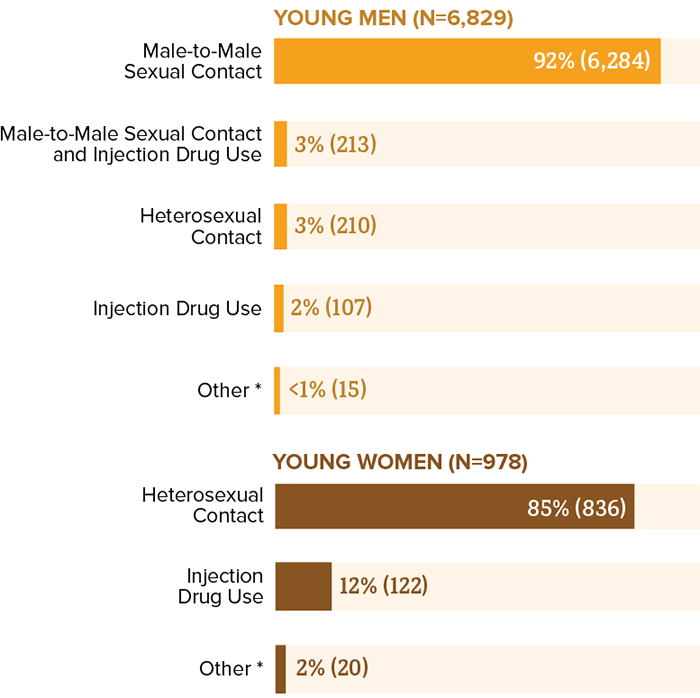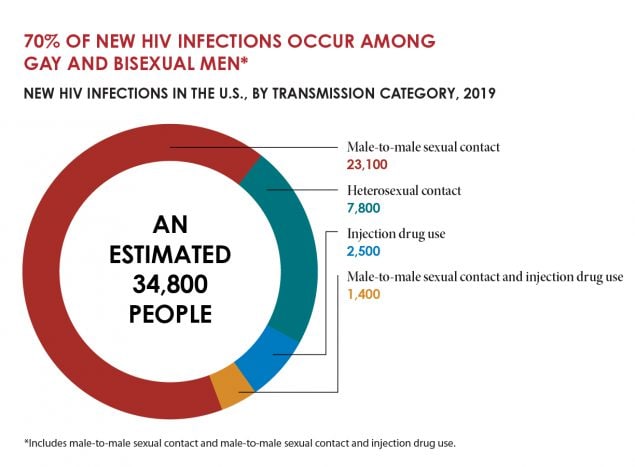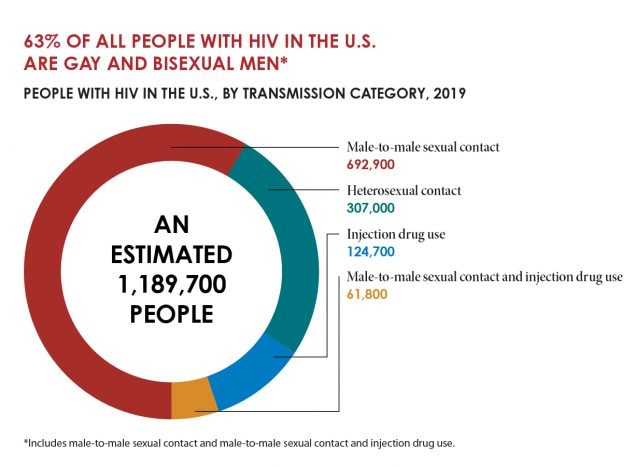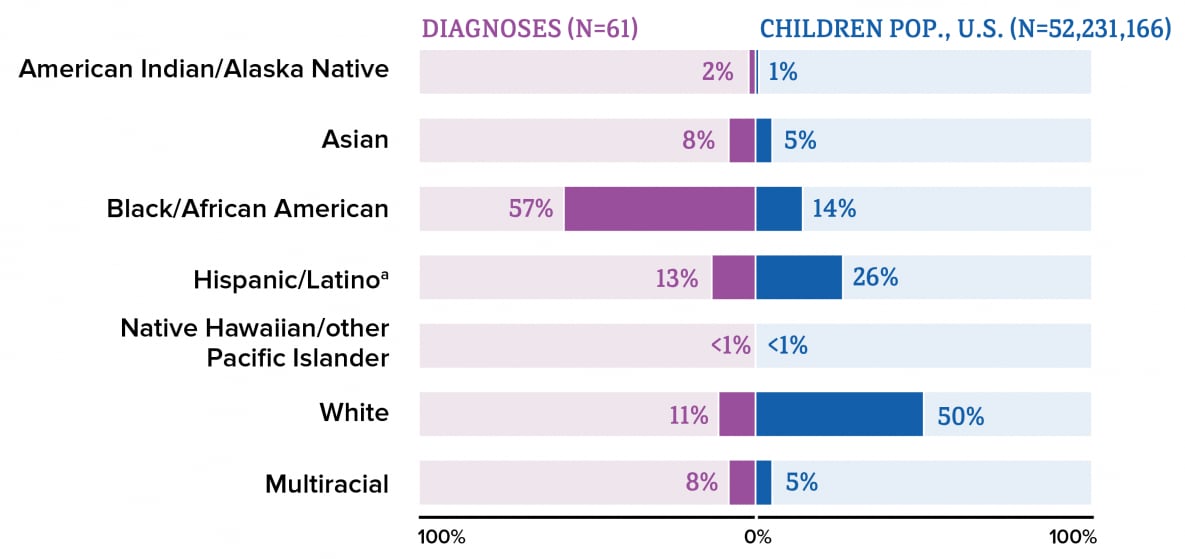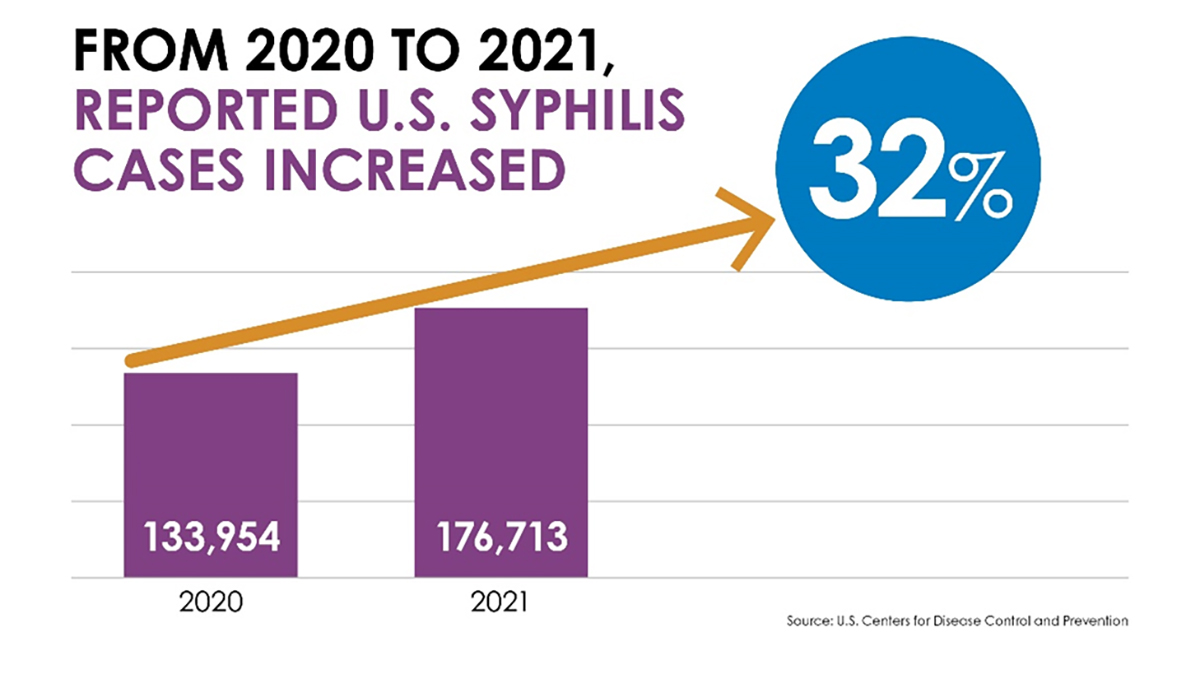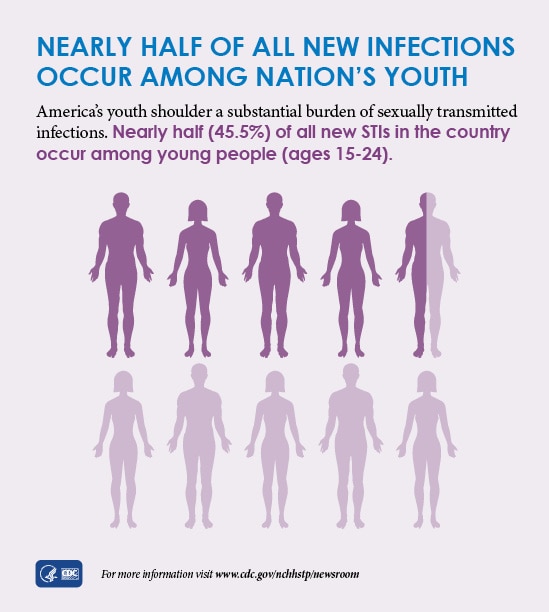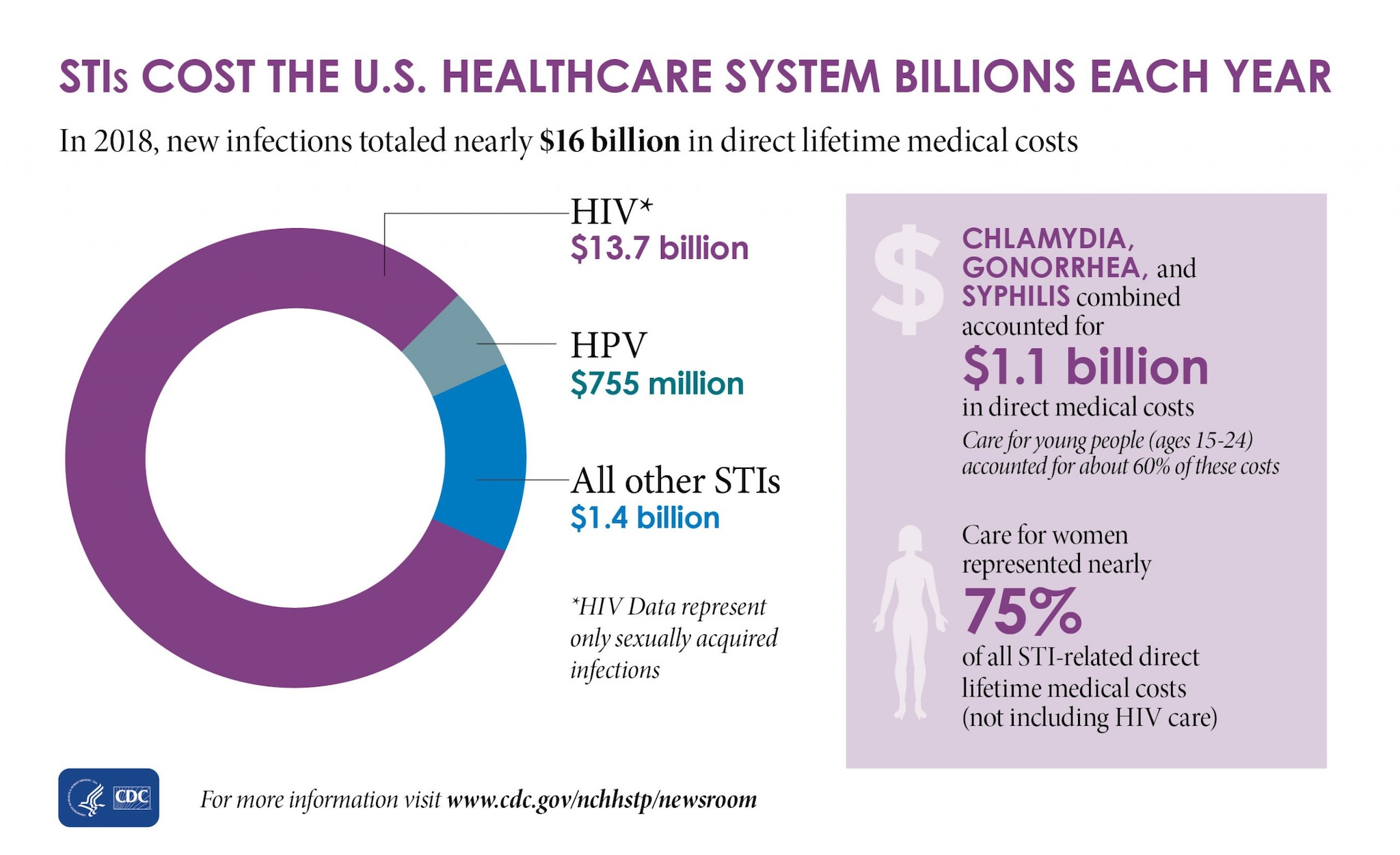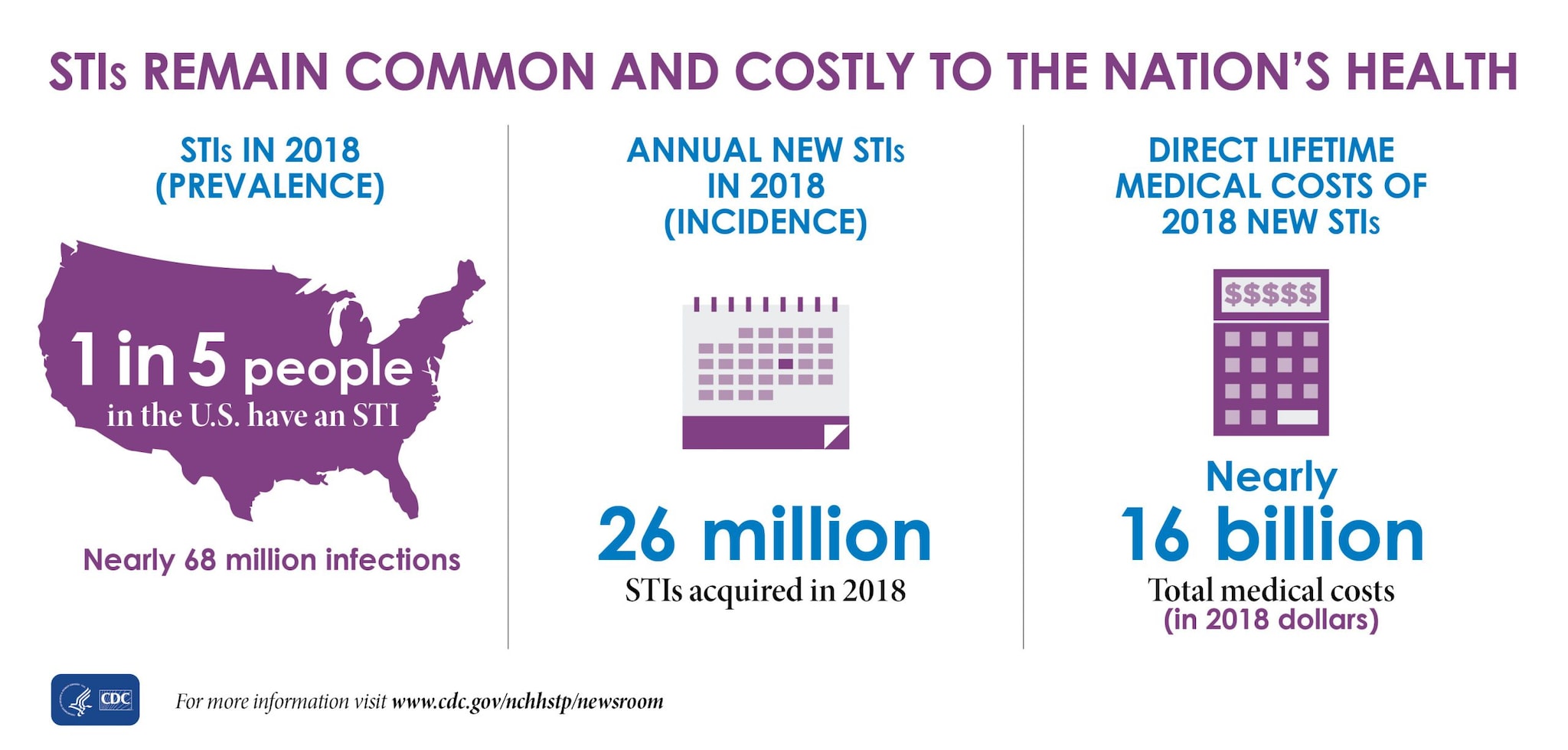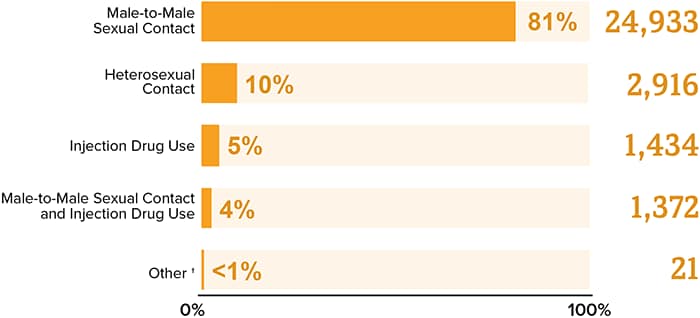
Although only approximately 7% of adult and adolescent males reported having had male-to-male sexual contact at some point in their lives, 82% of HIV infections among [all classes of] males in 2018 were attributed to male-to-male sexual contact. (CDC: Estimated HIV Incidence and Prevalence in the United States, 2015–2019 P. 7)
In 2019, the largest percentage of HIV infections among all was attributed to male-to-male sexual contact (66% overall and 81% among males). In 2019, among females, the largest percentage of HIV infection was attributed to heterosexual contact (83%).
For the receptive sodomite the estimated average chance of contracting HIV can range from 1.38% - about one transmission occurring for every 71 exposures, male or female - (https://www.medicalnewstoday.com/articles/chances-of-getting-hiv) to over 20% - equivalent to 1 transmission per 5 exposures via unprotected sex with an HIV-positive person who has acute HIV infection.. (https://stanfordhealthcare.org/medical-conditions/sexual-and-reproductive-health/hiv-aids/causes/risk-of-exposure.html)
In 2016 the rate of people living with HIV per 100,000 population was 368, with the death rate being 6. Male-to-male sexual contact made up 82.4% of HIV infections among males in 2017, while heterosexual contact made up 85.7% of HIV infections among females. The rate of Black males living with an HIV diagnosis is 5.6 times that of White males. The rate of Black females living with an HIV diagnosis is 17.6 times that of White females. The rate of Hispanic/Latino males living with an HIV diagnosis is 2.5 times that of White males. The rate of Hispanic/Latina females living with an HIV diagnosis is 4.2 times that of White females. (https://aidsvu.org/local-data/united-states)
The South has the highest number of people living with HIV, but if population size is taken into account, the Northeast has the highest rate of people living with HIV.
Thus this practice has been primarily responsible for more than 700,000 people with AIDS having died (as of 2017 since 1981) in the USA since the beginning of the epidemic. (Worldwide, 77.3 million people have contracted HIV and 35.4 million have died of AIDS-related illnesses since the beginning of the pandemic in 1981 (https://health.usnews.com/conditions/hiv-aids/articles/hiv-statistics)
And while the US rate has fallen by nearly half from 2010 to 2017, (https://www.cdc.gov/nchhstp/newsroom/2020/hiv-related-death-rate.html) it remains that the predominate means of HIV transmission is that of sodomy, (https://www.cdc.gov/hiv/basics/statistics.html) despite decades of attempting to tame it into being "safe."
In 2019, gay and bisexual men (men who have sexual relations with other men: (MSM) accounted for 69% (25,552) of the 36,801 new HIV diagnoses and 86% of diagnoses among males in the United States and 6 dependent areas (https://www.cdc.gov/hiv/statistics/overview/ataglance.html, accessed Mon, 09/20/21 (Fig. 6).
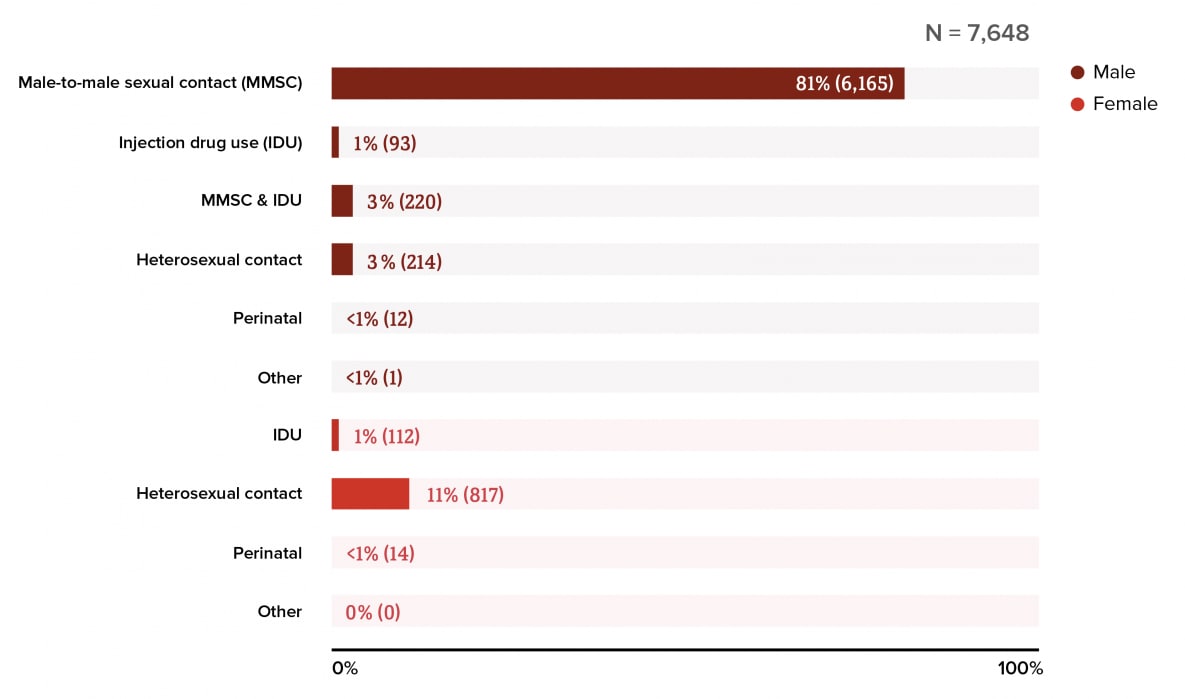 In 2019 in the United States and 6 dependent areas, diagnoses of HIV infection for adolescents and young adults attributed to MMSC (approximately 83%, including 3% MMSC and IDU) and those attributed to heterosexual contact (13%) accounted for approximately 97% of diagnoses in the United States. Asian female adults and adolescents had the largest percentage (93%) of diagnoses of HIV infection attributed to heterosexual contact, followed by Black/African American (91%), and Hispanic/Latino (87%) female adults and adolescents. In 2019, Black/African American children made up approximately 14% of the population of children but accounted for 57% of diagnoses of HIV infection among children. (https://www.cdc.gov/hiv/library/reports/hiv-surveillance/vol-32/content/special-focus-profiles.html) In 2019, among all Black/African American persons, males accounted for 76% of HIV infections, most of which (82%) were attributed to male-to-male sexual contact. (P. 6)
In 2019 in the United States and 6 dependent areas, diagnoses of HIV infection for adolescents and young adults attributed to MMSC (approximately 83%, including 3% MMSC and IDU) and those attributed to heterosexual contact (13%) accounted for approximately 97% of diagnoses in the United States. Asian female adults and adolescents had the largest percentage (93%) of diagnoses of HIV infection attributed to heterosexual contact, followed by Black/African American (91%), and Hispanic/Latino (87%) female adults and adolescents. In 2019, Black/African American children made up approximately 14% of the population of children but accounted for 57% of diagnoses of HIV infection among children. (https://www.cdc.gov/hiv/library/reports/hiv-surveillance/vol-32/content/special-focus-profiles.html) In 2019, among all Black/African American persons, males accounted for 76% of HIV infections, most of which (82%) were attributed to male-to-male sexual contact. (P. 6)
In 2005, 28.7% of HIV-negative men reported sex without a condom, rising to 32.8% in 2008, 34.7% in 2011 and 40.5% in 2014. The overall trend was similar for HIV-positive men: in 2005, 34.2% reported sex without a condom, rising to 37.3% in 2008, 39.8% in 2011 and 44.5% in 2014. (https://www.aidsmap.com/news/may-2016/american-gay-mens-use-condoms-has-been-falling-decade-regardless-serosorting-or-prep)
In the 2015 UNAIDS (Joint United Nations Program on HIV/AIDS) report, studies in sub-Saharan Africa found prevalence rates of HIV infection ranging from 6 to 37%
among MSM
As the observed prevalence rate of HIV in the general population was between 0.1 and 19%, the prevalence rate among men who have sex with men (MSM) was often 13 to 17 times higher."
Also reported, "People living with HIV in Canada had eight times the risk of Alzheimer’s disease and other non-AIDS-related dementia as their HIV-negative counterparts, and they were diagnosed 12.5 years earlier [which in part may be due to more medical attention], according to an analysis published in BMJ Open. They also had higher rates of several other age-related chronic conditions....Antiretroviral treatment has been associated with kidney damage and cardiovascular disease, and viral hepatitis and alcohol use—both common among HIV-positive people—can cause liver disease." (https://www.poz.com/article/people-hiv-diagnosed-dementia-13-years-earlier)
LGBQ young people are more than twice as likely to feel suicidal, and over four times as likely to attempt suicide, compared to heterosexual youth (Kann 2016)
In a 2016-2017 survey from the Human Rights Campaign Foundation, 28 percent of LGBTQ youth — including 40 percent of transgender youth — said they felt depressed most or all of the time during the previous 30 days, compared to only 12 percent of non-LGBTQ youth (HRC Foundation 2017: https://suicidepreventionlifeline.org/wp-content/uploads/2017/07/LGBTQ_MentalHealth_OnePager.pdf)
A large study also found that of 10,270 transgender patients identified, approximately 58% of transgender patients had at least one DSM-5 diagnosis compared with 13.6% of cisgender patients, indicating transgenders had about 4.5 times higher rate of psychiatric illness than straight persons. (https://www.ncbi.nlm.nih.gov/pmc/articles/PMC6830528/)
"41% of trans adults said they had attempted suicide, in one study. The same study found that 61% of trans people who were victims of physical assault had attempted suicide." (https://save.org/about-suicide/suicide-facts/)
In 2017 almost 35% of high school students who identified as transgender reported attempting suicide in the last 12 months (versus 9.% of straights), and almost 44% considered attempting it. Transgender students were much more likely to have ever had engaged in sexual relations than were cisgender (straight) females (43.1% versus 33.2%), and with more persons, while almost 15% reported their first act was before age 13 years vs. 1.5% for straights.
In 2021 the CDC estimated that 1 in 5 people in the U.S. have a sexually transmitted infection and at a cost to the U.S. healthcare system of billions of dollars annually. (https://www.cdc.gov/media/releases/2021/p0125-sexualy-transmitted-infection.html)
Half of all sexually active people will get an STD by the time they reach 25. (https://medalerthelp.org/blog/std-statistics/)
Also relevant, by 2021 the percentage of 18-24-year-olds who were married was 5% for men and 8% for women. with more cohabitating (fornicating) than were married (https://www.bgsu.edu/ncfmr/resources/data/family-profiles/brown-manning-relationship-status-trends-age-gender-fp-21-25.html)
About half (54%) of adolescents age 15-19 have had some type of sexual experience. (https://www.sciencedirect.com/science/article/pii/S2590151621000113?via%3Dihub)
Never-married adults report engaging in sexual relations approx. 14 times per year more than married adults. (https://www.researchgate.net/publication/314273096_Declines_in_Sexual_Frequency_among_American_Adults_1989-2014)
Single Americans over 45 engage in sexual relations more than married ones. (https://www.aarp.org/relationships/love-sex/info-05-2010/2009-aarp-sex-survey.html
By 2008 a CDC study estimated that one in four (26 percent) young women between the ages of 14 and 19 in the United States -- or 3.2 million teenage girls -- was infected with at least one of the most common sexually transmitted diseases (human papillomavirus (HPV), chlamydia, herpes simplex virus, and trichomoniasis). (https://www.sciencedaily.com/releases/2008/03/080312084645.htm) And note that only 33%of women even between age 20-34 are married.
In 2017 it was estimated that about 45 percent of U.S. men and women were infected with the cancer-causing human papillomavirus (HPV sexually transmitted disease - the most common sexually transmitted disease among men and women in the United States. Among women, the prevalence of HPV infection drops to about 22 percent as they age, but it remains high among men. (https://www.webmd.com/sexual-conditions/hpv-genital-warts/news/20170119/nearly-half-of-us-men-infected-with-hpv-study-finds)
The incidence of many STDs in gay, bisexual, and other men who have sex with men (MSM)—including primary and secondary (P&S) syphilis and antimicrobial-resistant gonorrhea—is greater than that reported in women and men who have sex with women only (MSW).
Since 2000, rates of P&S syphilis have increased among men, primarily attributable to increases in cases among MSM. Similar to past years, in 2018, MSM accounted for the majority (53.5%) of all reported cases of P&S syphilis and, of these, 41.6% were known to be living with diagnosed HIV. Although rates of P&S syphilis are lower among women, rates have increased substantially in recent years, increasing 30.4% during 2017–2018 and 172.7% during 2014–2018, suggesting a rapidly growing heterosexual epidemic.
In 2000 and 2001, the national rate of reported primary and secondary (P&S) syphilis cases was 2.1 cases per 100,000 population, the lowest rate since reporting began in 1941 (Figure 35, Table 1).
However, the P&S syphilis rate has increased almost every year since 2001. This rise in the rate of reported P&S syphilis has been primarily attributable to increased cases among men and, specifically, among gay, bisexual, and other men who have sex with men (MSM). MSM account for the majority of P&S syphilis cases and estimated rates are substantially higher among MSM compared with women or men who have sex with women only (MSW). 5 The number of cases among MSM has continued to increase, but within the last five years, cases among MSW and women have increased substantially as well. The increase in syphilis among women is of particular concern because it is associated with a striking and concurrent increase in congenital syphilis.
Centers for Disease Control and Prevention: STD Surveillance 2018 National Profile 27 West, and 7.2% in the Northeast (Table 29). Among women, the largest increases were observed in the West (41.2%), followed by the Northeast (40.0%), the South (30.8%) and the Midwest (30.8%) (Table 28). MSM continued to account for the majority of P&S syphilis cases in 2018 (Figures 39 and 41).
Of 35,063 reported P&S syphilis cases in 2018, 18,760 (53.5%) were among MSM, including 16,905 (48.2%) cases among men who had sex with men only and 1,855 (5.3%) cases among men who had sex with both men and women (Figure 39)....
Among the 24,176 male cases with information on sex of sex partners, 77.6% occurred among MSM. A total of 36 states were able to classify at least 70.0% of reported P&S syphilis cases as MSM, MSW, Centers for Disease Control and Prevention: STD Surveillance 2018 National Profile 27 West, and 7.2% in the Northeast (Table 29).
Among women, the largest increases were observed in the West (41.2%), followed by the Northeast (40.0%), the South (30.8%) and the Midwest (30.8%) (Table 28). MSM continued to account for the majority of P&S syphilis cases in 2018 (Figures 39 and 41). Of 35,063 reported P&S syphilis cases in 2018, 18,760 (53.5%) were among MSM, including 16,905 (48.2%) cases among men who had sex with men only and 1,855 (5.3%) cases among men who had sex with both men and women (Figure 39).
Overall, 5,416 (15.4%) cases were among MSW, 4,995 (14.2%) were among women, 5,858 (16.7%) were among men without information about sex of sex partners, and 34 (0.1%) were cases reported with unknown sex. Among the 24,176 male cases with information on sex of sex partners, 77.6% occurred among MSM. A total of 36 states were able to classify at least 70.0% of reported P&S syphilis cases as MSM, MSW, or women each year during 2014– 2018 (Figure 41). In these states, during 2017–2018, the number of cases increased 5.3% among MSM, 16.3% among MSW, and 32.9% among women.
Among 2018 P&S syphilis cases with known HIV status, 41.6% of cases among MSM were HIV-positive, compared with 7.9% of cases among MSW, and 4.0% of cases among women.
When examining reported P+S syphilis cases over time, 36 states were able to classify at least 70% of reported P+S syphilis cases as MSM, MSW, or women each year during 2014–2018. In these states, cases among MSM increased 5.3% during 2017–2018 and 51.5% during 2014– 2018 (Figure 41).
Among males, 610,447 cases of chlamydia were reported in 2018 for a rate of 380.6 cases per 100,000 males (Table 5). The rate of reported cases among males increased each year during 2000–2018, with the exception of 2012–2013, when rates remained stable (Figure 1). During 2017–2018 alone, the rate among males increased 5.7%; during 2014–2018, rates of reported cases among males increased 37.8% (Tables 4 and 5). This pronounced increase among males could be attributed to either increased transmission or improved case identification (e.g., through intensified extra-genital screening efforts) among gay, bisexual, and other men who have sex with men (MSM).
Despite this considerable increase in males, the rate of reported chlamydia cases among females was still about two times the rate among males in 2018, likely reflecting a larger number of females screened for this infection.
Among six jurisdictions participating in SSuN [STD Surveillance Network] continuously from 2010 to 2018,..The estimated gonorrhea case rate among MSM increased 375.5% during 2010–2018 from 1,368.6 cases per 100,000 MSM in 2010 to 6,508.0 cases per 100,000 MSM in 2018. Over the same time period, case rates among MSW and women also increased by 69.3% and 95.2%, respectively.
[Overall,] Rates of chlamydia have gone up by 19 percent since 2014. For gonorrhea, there are 583,405 cases in the U.S., and rates have gone up 63 percent since 2014. Rates of syphilis have increased 71 percent since 2014, and are highest in men and women 25-29 years old. congenital syphilis — when an infected mother passes syphilis to her baby during pregnancy — which have shot up by 185 percent since 2014, (https://www.cdc.gov/std/stats18/STDSurveillance2018-full-report.pdf)
The CDC study Sexually Transmitted Disease Surveillance 2014 found that among male cases for whom the sex of the partner was known, 83% of syphilis cases were MSM. 75.53% of syphilis cases in 2014 were among homosexual men. 51% of the homosexual men diagnosed with syphilis in 2014 were also HIV-positive. (https://www.cnsnews.com/news/article/michael-w-chapman/cdc-83-syphilis-cases-2014-among-gay-men-where-sex-sex-partner-was)
Among women, studies have shown that viral STD rates among bisexual-identifying women aged 15 to 44 years were almost three times higher than women who have sex with women exclusively. (https://www.stdcheck.com/blog/lgbt-std-statistics)
The United States is expected to spend more than $26 billion annually on HIV. (https://www.healthline.com/health/hiv-aids/facts-statistics-infographic)
"We estimated an average lifetime HIV-related medical cost for a person with HIV of $420,285 (2019 US$) discounted (3%) and $1,079,999 undiscounted for a median 3-year diagnosis delay and 3% base dropout rate. Our discounted cost estimate was $490,045 in our most favorable scenario and $326,411 in our least favorable scenario."
The cost for PrEP medication was about 2,000 a month, and which "Most health insurance plans, including Medicaid, cover." (https://www.plannedparenthood.org/learn/stds-hiv-safer-sex/hiv-aids/prep) Under the Affordable Care Act, PrEP must be free under almost all health insurance plans. (https://www.cdc.gov/hiv/basics/prep/paying-for-prep/index.html)
In 2017, around 61,300 people were actively taking PrEP.
"Despite biomedical advances in human immunodeficiency virus (HIV) prevention with antiretroviral pre‐exposure prophylaxis (PrEP), the burden of HIV among men who have sex with men (MSM) remains high [1]. MSM are a high‐priority risk group for PrEP use based on their behavioral and biological risk factors [2, 3]."
EDIT: "the federal government has announced that almost all health insurers must cover the HIV prevention pill, known as PrEP, or pre-exposure prophylaxis, with no cost sharing — including for the drug itself and, crucially, for clinic visits and lab tests...This means...Truvada or Descovy, the two approved forms of PrEP, should now be totally free for almost all insured individuals....when taken daily, the tablet reduces men’s risk of contracting the virus from sex with other men by more than 99 percent...PrEP use remains largely limited to white gay and bisexual men...
Gilead readily provides PrEP for free to lower-income people who lack health insurance, but the pharmaceutical company does not cover the associated clinic visits and lab tests...Since this spring, Truvada has been available in a generic form with a list price as low as $30 per month. By comparison, Descovy’s list price is currently $1,930 and Truvada’s is $1,842.... (https://www.nbcnews.com/nbc-out/out-health-and-wellness/prep-hiv-prevention-pill-must-now-totally-free-almost-insurance-plans-rcna1470)
Which raises raises private insurance rates and or taxes for all who pay them.
Such are just part of the financial and societal costs that affect every one to varying degrees due to man disobeying God's program, in which sexual union is only between male and female in marriage. And which provides the stable safe environment for trust and intimacy and for children which are to result, versus fornication as well as artificial contraceptives.
However, not only is the practice of sexual sin promoted, but war is waged against all who do not agree with such, which includes the tactical, indiscriminate psychological use of the term “homophobic” as part of the overall strategy to misrepresent any all who object to homosexuality and its homoeroticism as being motivated by an irrational fear, and as hate-mongering KKK types.
The idea that one can be caring, charitable, and friendly toward practicing homosexuals (as I seek to be) while considering the orientation as a disorder, and opposing those who demand we affirm it, is not be allowed.
In addition, since the practice of homosexual relations is unnatural, it usually requires greater attempts at rationalizing away the guilt that sin normally should result in, and many even engage in strenuous attempts to insist all must affirm it.
Which effects mean rejection of the Lord Jesus, leaving the sinner with no forgiveness and more repressed guilt, or worse, a seared conscience that will not repent and which finally may no longer be able to. Which state is to be avoided at all costs.
Which effects mean rejection of the Lord Jesus, leaving the sinner with no forgiveness and more repressed guilt, or worse, a seared conscience that will not repent and which finally may no longer be able to. Which state is to be avoided at all costs.
uniquely compatible and complementary, and only joined them together in marriage - as the Lord Jesus Himself specified (Mt. 19:4-6; cf. Gn. 2:24) - and only condemned homosexual relations wherever they are manifestly dealt with.
